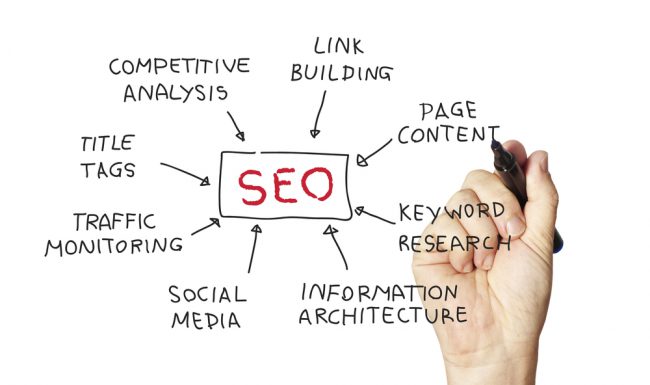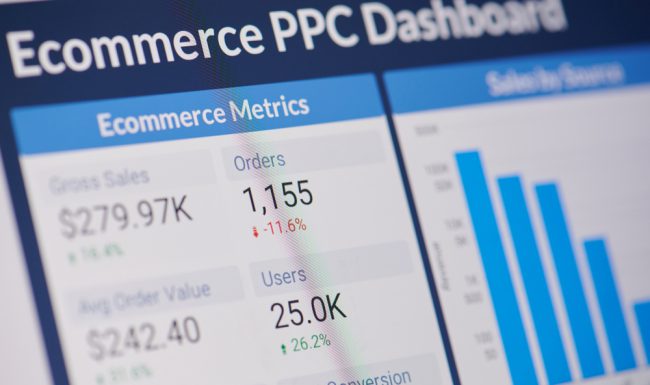In today’s world, you have to keep up with so much just to stay competitive. A business without a digital presence is at a disadvantage so, tough as it is, you must adapt to it. Otherwise, your practice is lost amongst the hundreds – if not thousands – out there that exist just in your area alone.
See more ProSites’ SEO Content
- SEO For Dentists & Dental Practices [An In-Depth Guide]
- Dental SEO Marketing Company [How to Hire the Best]
- Dental SEO vs PPC: How to Integrate Them for the Best Dental Marketing (➜ Currently Reading)
In the past, to connect with potential patients, dental practices relied on mass distribution strategies like flyers, direct mailers, and local TV and radio commercials, subject to their budgets. However, the advent of the internet has revolutionized patient outreach, with people transitioning from passive information consumers to active information seekers. With this change, SEO dental marketing has become instrumental, allowing dental practices to effectively reach their potential patients who are now online, actively seeking dental services.
But now that everyone’s online, you need the correct tools and a strong, consistent presence to succeed. The rules are always changing, but it is just as important as running the business itself.

What is Search Engine Optimization (SEO) for Dentists?
Search Engine Optimization (SEO) for dentists, a crucial aspect of dental search engine marketing solutions, is the practice of influencing visibility in search results through unpaid, organic methods. That means there is no advertising money involved directly in reaching potential patients. It also means that when an interested consumer is looking for a business, the results that show up on a search engine are the most relevant to the person’s interests. This is vital because it’s been shown that 85% of people do not click to the second page of results, and there are only 10 listings per page. The higher your ranking on a results page by using SEO for dentists, the better. You’re reaching potential patients and they already want to do business.
Key points about Dental SEO:
- SEO results are unpaid.
- Efforts are spent 100% on interested parties and not wasted on others.
- SEO delivers measurable results.
- SEO has to do with the content on your site, and the way you send signals to Google.
- This tactic takes at least 3-to-6 months to begin to develop, but once the ball is rolling, if continued, it snowballs.
- Rankings are organic and based on keywords that people search for.
- SEO covers various types of searches such as video, image, shopping, and news.
SEO is comprised of on-page optimization and off-page optimization. Don’t get nervous, we’re going to break these down.
On-page optimization is essentially anything you do on your webpage or broadly on your website as a whole to show the search engines that you’re relevant. Not only does this include what you say, but also how you say it.
- Does your copy incorporate phrases and keywords that prospective patients use to search?
- Is it easy to understand?
- Is the page layout conducive to skimming?
Though content may be king, there are also other factors that impact on-page optimization. One of the most important things you can do to help your SEO ranking is to ensure your website is responsive.
Responsive sites interpret which type of device is being used (desktop, smart phone, tablet) and scales the site accordingly. In fact, Google places so much importance on the mobile user experience, it gives precedence to mobile-friendly websites in search engine results. See the complete whitepaper for more ways to improve your dental website’s on-page optimization.
Off-page optimization includes content & links on other sites about your dental practice. These include business directory listings, such as your Google My Business, Yelp, Healthgrades & other online profiles that allow patients to review dentists & dental practices. Social media profiles and reputable backlinks (links from other websites to yours) are two other important elements of off-site SEO.
SEO Tips:
- Within your website copy use phrases that prospective patients would use to find your services.
- Avoid duplicate website content! Google defines this as “substantive blocks of content” within a website or across multiple websites “that either completely match other content or are appreciably similar.”
- Ensure your website is responsive (i.e., automatically scales to the device used).
- Confirm your business contact information (name, address, phone #) is correct across all business directories.
- Obtain qualified backlinks. These should be relevant to your website in terms of both location and industry.

What is Pay-Per-Click (PPC) for Dentists?
Pay–per-click (PPC), which is a medium used to direct consumers to websites, is also instrumental in running a business online smoothly. To start, a business (your practice) provides an advertisement to Google, and an ad spend budget that can be drawn from.
When an interested searcher types in certain keywords, search results will appear, but so will advertisements called Google Ads (previously AdWords) that look just like search results, except for the small label “ad.”
When creating a PPC campaign for your practice you bid on specific keywords that you’ve researched (for help getting started, see the full whitepaper for details on Google’s Keyword Planner) and when people looking for a dentist use those keywords in their search, they see your ad. You only pay when searchers click your ad and are subsequently taken to your practice website or landing page.
And, unlike with traditional ads that often require a certain number of mailers or spots, Google Ads allows you to adjust your budget daily according to search volume and even gives you the ability to shut-off spend instantly. This means you’re never trapped paying for ads no one sees.
Say for example, someone is searching for a dental practice nearby. They could type in their zip code or city with the phrase “dentist.” If you are utilizing PPC, your advertisement would show up. If the placement and messaging catches the prospective patient’s attention, they could possibly click on it to get redirected to your website, rather than clicking on one of the organic listings.
Like the name implies, you only have to pay if someone actually clicks on your ad, not just if they see it. This means you are reaching only people who are interested in your service, and only paying for people who actually take the time to learn more about you.
Key points of Dental PPC:
- PPC is paid dental advertising on search engines.
- This strategy works well with keywords and has immediate results.
- PPC provides results that are measurable and trackable.
- You have to test and change your ads frequently to get the best return on investment.
The same customization that allows PPC to target the right patients for your dental practice at the right time also makes it easy to adjust your campaign as needed and track ROI.
PPC campaign analytics allow you to track everything from how often your ad appears (# of impressions) or doesn’t appear (lost impression share) in search results to the number of times it’s clicked (click-through-rate or CTR) and what you actually paid per click (cost-per-click or CPC).
Campaign results also include conversion rates and the average position your ad garnered on the results page. This level of transparency is great, but only if you stay on top of it. Remember, these indicators are in constant flux so even if your campaign has been delivering positive results, taking a break from tracking can have a negative impact.
PPC Tips:
- Include keywords in your Google Ad headline to make the most of your 30-character limit. Bonus – keywords that are part of a searcher’s query will appear in bold, drawing attention to your ad.
- Ad body copy is limited to a single line of 70 characters on desktop or two lines of 35 characters on mobile phones. It doesn’t take long to run out of room, so make sure to use this space to describe your dental practice or promotion in enough detail to capture interest and build credibility.
- Make your call-to-action strong! This is where you tell searchers what to do, so be specific (i.e., call (000) 123-4567 for info).
- Use ad extensions to get more attention at no additional cost. Ad extensions are pieces of information that expand your advertisement to make it more useful to users. They typically include click-to-call telephone numbers, links to additional pages on your website, patient reviews, and call out text with key details such as, “Same Day Appointments” or “All Major Insurance Accepted.” You should select ad extensions that are relevant to your campaign and its goals.

Dental SEO VS. PPC: Which Do You Use?
Using both strategies is ideal, but what are the differences between SEO and PPC? It depends on what your needs are and what your limitations are in terms of budget, time, and goals.
- SEO is a long-term strategy because it takes time to build and see results. PPC is relatively quick and has fast turnaround time in terms of getting your practice seen on page 1 by prospective patients.
- SEO does not accrue cost over time, but PPC does. Thankfully, you only pay based on the click-through rate.
- SEO takes maintenance, but PPC takes even more time to maintain. Making sure you aren’t going over budget and adjusting to business influxes can take time and research to optimize your digital strategy.
- SEO and PPC are like the differences between getting braces versus a surgery. Both will drive positive results, but like braces SEO takes a lot of upfront effort that pays off in the long run for a very long time, whereas PPC is likened to surgery: it delivers immediate results for your current situation.
- Running strong dental PPC campaigns at the start can help you achieve SEO goals faster.
- Both SEO and PPC rely on search engines and they produce results based on keywords used.
How to Correctly Target Potential Dental Patients with Search Marketing
Most of the time, dentists target keywords based on which services bring the highest revenue. While this makes sense, it’s also recommended to target keywords that you know potential new patients are looking for, as sometimes your preferred targeted keywords may not always align with what people are actually searching for in your area. For example, while you may want to target Invisalign TM, you may find that people in your area are much more prone to search for teeth whitening.
So, how can you figure out which keywords you should be targeting for your practice?
Google Ads has a free keyword targeting tool that helps you identify keywords and search volume to see which keywords you can utilize on your website and in your pay-per-click dental advertising campaigns.
Now, let’s dive into how to target keywords based on paid and organic search.
Organic Searches and SEO
To help improve your organic listings on search engines, you’ll first want to develop a content strategy that supports the keywords you want to target. An effective strategy should include common patient pain points, variations of your keywords through unique content, and ensure a natural reading experience (don’t make the keywords sound forced).
For example, you may find that “what is Invisalign” has a significant amount of search volume, along with “how much does Invisalign cost?” This research indicates that your audience may not know much about the product, but there is interest in it.
Your content strategy should then address these questions along with other related information. You may write a blog post that describes Invisalign and what it is, and a second post about how it works, if it’s covered by insurance typically, or what financing options are for it at your practice.
By targeting keywords that your audience is interested in on your website and blog, it can help you improve your rankings on Google and other search engines.
See: Dental SEO Guide
Pay-Per-Click (PPC)
Targeting audiences via pay-per-click advertising is easier than targeting keywords for organic listings because you are paying for relevance, (rather than earning) to a search query. Therefore, you have more control over which keywords that you want to bid on, where you’d like your ads to appear and who you’d like to appear for (i.e. only people within 15 miles of your practice).
With pay-per-click, the key to targeting the right audience is understanding who you want to target and defining them through the options on the platform. You can also utilize the same keywords from your SEO strategy and implement them within your pay-per-click campaign.
For example, if you know that there’s an interest in Invisalign TM but it isn’t understood by your audience, your list of keywords used to inform you SEO content strategy can then double up as a list of keywords that you bid on with Google Ads.
Then, you can take it a step further and target a neighborhood whose primary demographic consists of families with adolescent children within Google Ads.
Finally, you should refine your targeted audience by consistently finding negative keywords (keywords that you don’t what your ads to show up for) and adding them to your campaigns. This way, you tell Google who you don’t want to attract to your practice. For example, someone searching for Invisalign TM may enter “is Invisalign a ripoff?” Therefore, you can add the word “ripoff” as a negative keyword so that your ad doesn’t appear for such searches, and waste precious budget dollars.
Have specific questions regarding how to put search marketing can help your practice? Our dental marketing experts are here to help. Reach out to an Internet Marketing Advisor today at (888) 932-3644.




